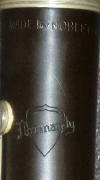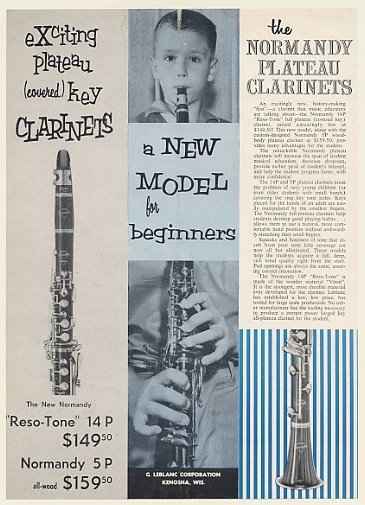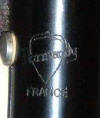For Information on Noblet (Leblanc and Normandy) company history
please click here
Visit me on YouTube at
Visit us on YouTube Clarinet Perfection on YouTube
or email at
gottalovetheknowledge@gmail.com
Quicklinks:
[ General Information ] [
Detailed Information ] [ Normandy Emblems ] [
Normandy Serial Numbers ]
[ Original ] [ Special ] [
Reso-Tone] [ Transitional
] [ Model 5, 7 & 10 ] [ Model 5P ] [
14 ] [ 14P ] [ 6 ]
[ 140P ] [ 10P ] [ 8
] [ 208 – Stubbins ] [ 7 version 2 ]
[ 4 ]
|
|
|
| (my brief synopsis of Normandy) Normandy used to be a separate brand before Leblanc bought them in 1978. I believe they were a closely cooperating company with Leblanc as the bodies seem to be very similar to the Noblets in dimensions including the tenon rings and certain era of keywork. Tonal-wise of the various vintages of Nomandy 4, 8s and 10s I have discerned very little tonal qualities differences. Though they were of various vintages, various conditions and various times; so little could be learned.Earlier Normandys had the Normandy sheidl emblem and the world FRANCE just below the shield. These ones seem to be from the 1950s and before. They may have had plastic bells, etc with no designation differences until they were later stamped Special, 4, etc.Before the buyout Normandy had an entire line of Clarinets. Normandy (ebonite), Normandy 4, 8, 10, and 12. They also had “Special” models in which some may have had silver plated keys (a step up), others ebonite bells (a step down) and Buffet/Selmer type keywork. After the buyout I believe only Normandy 4s existed. Bores are identical to the Noblet 40/45 line; very good rich tone though thicker wood bell and tenons not as tight fitting the tone is slightly not as complex nor as spread.Normandy also had a 5 and 7 model. The Normandy 7 had the Buffet/Selmer type keywork (not inline trill keys but offset). The Normandy 5 had inline trill keys and a plastic barrel and bell. Since Selmer USA’s purchase of GLeBlanc USA (primarily a distributor) Overall, these are very good instruments for the money when properly – Some Normandy Special sn 9541A had a stamp “Made by Noblet”
|
|
Normandy was a marque within in the Leblanc range of musical instrument brands. The Normandy model lineup included soprano clarinets in B-flat, E-flat, A, and C; alto and bass clarinets; oboes, and flutes. In this article, we’ll examine the Normandy soprano clarinets.The Normandy was the entry-level wooden clarinet within the Leblanc range. Some of the early Normandy models are stamped “MADE by NOBLET”, and early Normandy brochures include ample references to the instruments as being Noblet products.The early generations of Normandy soprano clarinets had simplified keywork compared to the Noblets. The Normandy went through multiple revisions during the 1950’s, with successive generations losing the simplifications used on the earlier instruments. By the late 1950’s, wooden models without simplified keywork had been introduced. These were very similar to the Noblet instruments of the day. |
|
| THE ORIGINAL NORMANDY The first Normandy model is commonly referred to as the “Original Normandy”. It has several specific identifiers such as a shared post for the throat G# and A keys, three sets of posts for the trill keys, and a composite, rather than wooden, bell. Unlike later low-priced offerings in the Normandy lineup, the Original model featured inline “jump” trill keys.The Original Normandy had a logo with a narrow shield with a diagonal “Normandy” in a narrow script font with serifs on the first and last letters. The instruments were also marked “MADE IN FRANCE” at the top of the joints, barrel, and bell.Most of these instruments are encountered with unplated German silver keywork, but some are known with bright nickel plating. The body and barrel of the Original Normandy can be found in unstained and black-stained finishes.  |
|
| THE NORMANDY SPECIAL Introduced sometime later than the Original Normandy was the Normandy “Special”. As a further cost-saving measure, the “Special” was equipped with angled, Buffet-style trill keys, mounted on three sets of posts. Throughout the Normandy model run, Normandys with the Buffet-style trill keys were offered at lower prices than otherwise-identical Normandys equipped with inline trill keys.Some Specials can be found with the shared post for the G# and A throat keys as used on the Original Normandy, but most were made with separate suspensions for the throat keys. As with the Original Normandy, the Special was equipped with a composite bell.The Normandy Special had the same logo as the Original Normandy, with “SPECIAL” stamped above the Normandy shield on the upper joint. This logo was not used on later generations of Normandys with Buffet-style trill keys. The instruments were also stamped with “MADE by NOBLET” at the top of the upper joint.Normandy Specials are commonly found with bright nickel-plated keywork, but some were made with unplated German silver keywork. Some Specials with silver-plated keywork have also been reported.    
|
|
| THE NORMANDY FRANCE RESO-TONE The first Reso-Tone was much like the Normandy Special. The keywork was identical to the Special and featured Buffet-style trill keys mounted on three sets of posts, and throat G# and A keys mounted on separate suspensions. The body, barrel, and bell were made out of a heavy, rather brittle plastic.The France Reso-Tone was stamped with the wider Normandy shield with serifs on the “N” and “y” .Early Reso-Tones had “MADE IN FRANCE” at the top of the upper joint, while later Reso-Tones were marked “MADE IN FRANCE” above the register key and “MADE by NOBLET” above the Normandy logo at the top of the upper joint.The France Reso-Tone was equipped with unplated German silver keywork, as found on the Original Normandy and some of the Specials. The wide Normandy shield with serifed “N” and “y” was used on this model.This was a short-lived model. By 1958, the USA-made Normandy 14 Reso-Tone had been introduced.
|
|
| THE TRANSITIONAL NORMANDY The next evolution of the wooden-body Normandy was the “Transitional” model. It featured the same inline trill keys mounted on three sets of posts as with the Original Normandy, but seperate mounting posts for the throat G# and A keys.The Transitional Normandy is found with unplated German silver keywork and bright nickel-plated keywork. Examples are known with composite and wooden bells. The narrow Normandy shield with serifed “N” and “y” was used on these models. The instruments were also marked “MADE by NOBLET” at the top of the upper joint. |
|
| NORMANDY 5, 7, and 10 By the middle-to-late 1950’s, Normandy models 5, 7, and 10 had been introduced. The keywork on these models were identical and lacked the simplifcations found on earlier Normandys–the inline trill keys were now mounted on four sets of posts, and the throat keys each had their own separate suspensions. The Normandy keywork had now evolved to the point of being very close to that of the Noblet.Models 5, 7, and 10 differed only in the composition of the barrel and bell. Initially, the Model 5 was equipped with a composition “Tone-Brite” barrel and bell; the Model 7 had a wooden barrel and composite bell, and Model 10 featured a wooden barrel and bell. All have bright nickel-plated keys, while both black-stained and unstained finishes can be found on the body. The wide Normandy logo with serifed “N” and “y” and the word FRANCE underneath the shield was used on these models.Model 5 disappeared from the Normandy lineup by 1961, replaced by the Model 7 which was then equipped with a “Tone-Brite” composite barrel and bell. This iteration of the Model 7 was gone by 1966. Early Model 7 and Model 10 Normandys were not stamped with a model number, but by 1966 the Model 10 was marked with a 10 on the upper joint above the wide Normandy shield.A c.1962 brochure lists the Normandy 7 at a price of $172.50 and the Model 10 at $182.50. In 1966, the Normandy 10 carried a list price of $189.50 Serial number analysis shows that the Model 10 remained in production
|
|
| NORMANDY 5P The mid-to-late 1950’s also saw the introduction of the Model 5P. This model was equipped with plateau keys throughout. Unlike the standard Model 5, which had inline trill keys, the 5P was equipped with the Buffet-style trill keys mounted on three sets of posts.The body and barrel of the 5P were wooden. Early 5P models were equipped with was composite bells, but by around 1962 these had been changed to wooden. The keywork was nickel-plated.In 1960, the Normandy 5P had a list price of $159.50. A c.1962 brochure shows the 5P, now upgraded with a wooden bell, offered at $200.00 list.By 1964, the Model 5P had been replaced by the Model 10P.
|
|
| NORMANDY 14 By 1958, the Normandy 14 Reso-Tone had been introduced. This is the familiar USA-made “Viton” plastic Normandy. The 14’s bright nickel-plated keywork incorporated inline trill keys mounted on three sets of posts as seen on the Original and Transitional models.The Model 14 featured yet another new logo, a wide-type shield with “Normandy” in flowing script without serifs. A 1958 ad shows that the Model 14 could be obtained with a black, gold, red, or white plastic body. |
|
| NORMANDY 14P By 1960, the Normandy 14P Reso-Tone was in production. This was a “Viton” plastic clarinet with plateau keys. Unlike the regular Model 14, the 14P was made in France and equipped with Buffet-style trill keys mounted on three sets of posts. With the exception of the plateau key system, the 14P keywork was identical to the Normandy France Reso-Tone.The 14P had the serifed Normandy shield used on Models 5, 5P, 7, and 10 stamped on its body. On the upper joint, FRANCE appears below the Normandy shield. The bell of the 14P, oddly, had the same script Normandy logo as used on the USA-made Normandy 14.In 1960, the list price of a Normandy 14P was $149.50.  
|
|
| NORMANDY 6 Sometime during or after 1961, the Model 6 was introduced. During its production run, it was the lowest-priced Normandy with a wooden body. It was essentially a reintroduction of the Special, with a wooden body, composite barrel and bell, and Buffet-style trill keys mounted on three sets of posts. The keywork was bright nickel-plated. A short-lived model, the Model 6 was replaced by 1965 with the Model 8.A c.1962 brochure offers the Model 6 at a list price of $162.50. |
|
| NORMANDY 140P Sometime during or after 1961, the Model 140P was introduced. Made of “Vi-Plex” plastic, It seems to have been identical to the Model 14P except for the logo details. The 14P has FRANCE under the Normandy shield on the upper joint as seen on Models 5, 5P, 7, and 10, while the 140P has a much smaller MADE IN FRANCE stamped near the top of the upper joint.A c.1962 brochure shows the Normandy 140P at a list price of $179.00. In 1966, the Normandy 140P had a list price of $199.50.    |
|
| NORMANDY 10P By 1964, the model 10P was in production. This was a plateau-key clarinet with inline trill keys. The body, barrel, and bell were all wood.In 1966, the list price of a Normandy 10P was $245.00. |
|
| NORMANDY 8 The Model 8 was introduced by 1966 as a replacement for the Model 6 and, like the Model 6, was the lowest-priced wooden Normandy. The Model 8 differed from the Model 6 in having its Buffet-style trill keys mounted on four sets of posts rather than three, and was equipped with a wooden bell rather than a composite one.In 1966, the Normandy 8 had a list price of $175.00.Serial number analysis shows that the Model 8 was in production by 1965 and was produced through at least 1967. |
|
| NORMANDY 208 Stubbins The Model 208 incorporated the Stubbins double mechanism for the register key, with separate register key vent and B-flat tone tone, similar to the systems found on the lower-pitched members of the clarinet family. Depressing the register key without depressing the thump ring actuated the B-flat tone hole.Unlike the Model 8, the 208 had inline trill keys mounted on four sets of posts. The 208 sported a very large circular logo with a large “S” in the centre flanked by “Wm. H. Stubbins” in script. The Stubbins logo was located under the Normandy shield on the upper joint.In 1966, the Normandy 208 was offered at a list price of $199.50.   |
|
| NORMANDY 7 REINTRODUCED Sometime during or after 1966, yet another version of the Model 7 was introduced. It is easily distinguised from the earlier model 7’s by having a wooden barrel and bell, and the Normandy logo now incorporated the number 7 within the shield below the word “Normandy”.Serial number analysis shows that the new Model 7 remained in production through at least 1970. |
|
| NORMANDY 4 Perhaps the most familiar of all Normandys, the Model 4 was introduced by 1969 and continued in production until the phaseout of the Normandy brand in the mid-2000’s. The Normandy 4 is equipped with nickel-plated keywork, inline trill keys, and a wooden body, barrel, and bell. All are marked as a model 4 with various iterations of the Normandy logo.Keywork details have changed somewhat over the decades. Early Model 4 instruments appear identical to the Model 10, with needle spring suspension for the C#/G# key and trill keys that are flat for their entire length. The C#/G# spring was eventually changed over to a coil spring, and the trill keys acquired the contoured profiles of their Noblet cousins.  After Conn-Selmer bought out Leblanc the Normandy 4 became the Noblet After Conn-Selmer bought out Leblanc the Normandy 4 became the Noblet4 before being phased out with the Bliss line of student clarinets. |
|
| NORMANDY 4 Special A Model 4 Special was also produced. The 4 Special was equipped with a composite bell rather than a wooden one.The 4 Special has the familiar Normandy 4 shield logo with “Special” above in flowing script. Serial number analysis shows that the 4 Special remained in production through at least 1977 |
|
| much of the Information was provided by: Gregory G, Michigan |
|
| Normandy Resonite emblem | 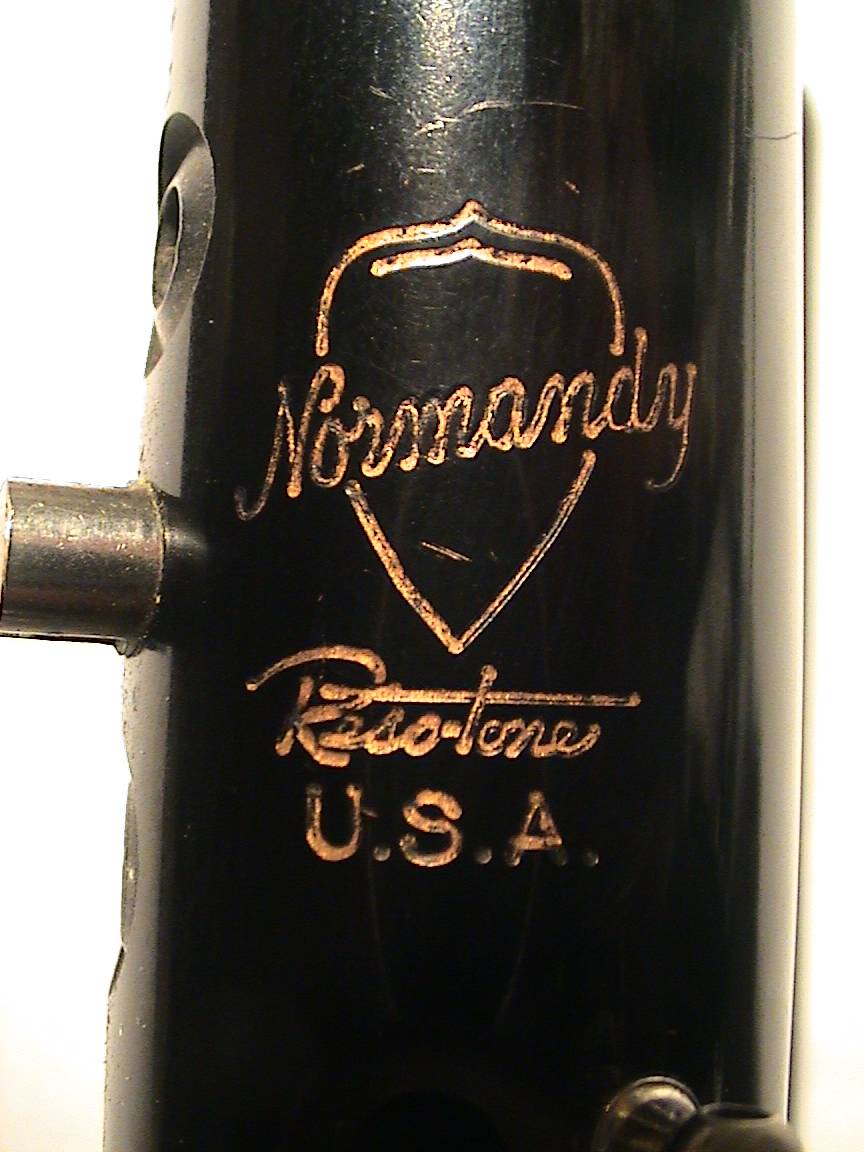 |
| Early Normandy – SN # 1697 (approx 1940s). Only with a Normandy emblem and FRANCE underneath it. Probably the precursor to the Normandy 4 branding. Some early Normandy 4s had the 4 emblem on the lower joint only. Some early ones were later called Specials with a plastic bell. SN# 15xxx was a Special without the designation which dates it to approx 1960 or earlier (see pic below)  |
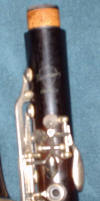 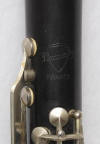 |
Normandy 4 emblem (top)
906xx Normandy 4 New Normandy 4 logo (bottom)
|
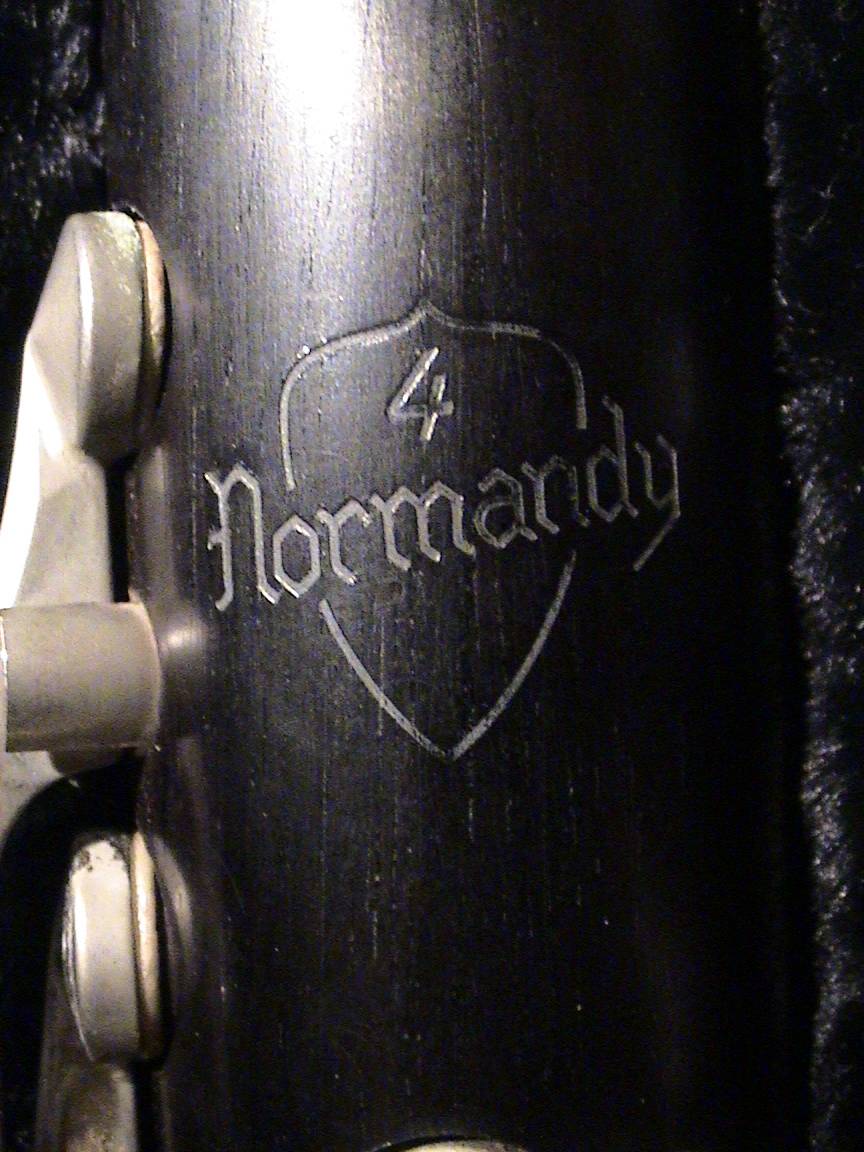 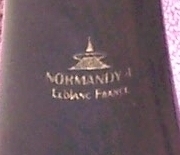 |
Normandy 5
|
|
Normandy 8 emblem
|
|
Normandy 10 emblem
|
 |
Normandy 12
|
|
| Liberty Noblet (Normandy) Clarinets – In late 2005 the Music Group had a essay contest about band directors for “why your band director is the best”. The winning school received a complete set of special branded instruments, they were branded “Liberty”. This included Armstrong Flutes, Bach Trumpets, Noblet Clarinets, Bach Trombones, Selmer Alto and Tenor Saxophones. These are not professional instruments. These are not intermediate instruments, but student instruments. The Noblet clarinet is somewhat stripped down Noblet. The clarinet, model LCL-100 had a “retail” price list of $730 |
Link # 1 Link #2  |
| Serial Number Log for Normandy 8, 10 & 4 (and probably the other models too) |
||
| 1964 | 24000 | 35500 |
| 1965 | 35501 | 42000 |
| 1966 | 42001 (42849 N10) | 47000 |
| 1967 | 47001 | 51500 |
| 1968 | 51501 | 55398 |
| 1969 | 57401 | 59750 |
| 1970 | 59751 | 53804 |
| 1971 | 53805 | 65499 |
| 1972 | 65500 | 69699 |
| 1973 | 69700 | 82363 |
| 1974 | 72364 | 74728 |
| 1975 | 74729 | 76007 |
| 1976 | 76008 | 78349 |
| 1977 | 78350 | 86946 |
| 1978 | 86947 | 91100 |
| 1979 | 91101 | 93648 |
| 1980 | 93649 | 96859 |
| 1981 | 96860 | 9760 |
| 1982 | 97761 | 98257 |
| 1983 | 98258 | B26150 |
| In the late 1980’s Normandy changed the method of springs (cheaper) Instead of the normal needle spring they went to a coiled spring for the C#/G# key |
||
Leblanc
Leblanc
Vito
| Vito Clarinets Models 7212,7213,7214,v40,cl612,cl614,7242 | ||
| 1972 | A80000 | B00235 |
| 1973 | B00236 | B19755 |
| 1974 | B19756 | B43177 |
| 1975 | B43178 | B67359 |
| 1976 | B67360 | B89670 |
| 1977 | B89671 | C00000 |
| 1978 | C11804 | C30365 |
| 1979 | C30366 | C54833 |
| 1980 | C54834 | C75803 |
| 1981 | C75804 | D01578 |
| 1982 | D01579 | D25635 |
| 1983 | D25636 | E13604 |
| 1984 | E13605 | A07632 |
| 1985 | A07633 | A22037 |
| 1986 | A22038 | A37938 |
| 1987 | A37939 | A61456 |
| 1988 | A61457 | A86496 |
| 1989 | A86497 | B14492 |
| 1990 | B14493 | B40076 |
| 1991 | B40077 | B64823 |
| 1992 | B64824 | B89436 |
| 1993 | B89437 | C18260 |
| 1994 | C18261 | C45957 |
| 1995 | C45958 | C74050 |
| 1996 | C74051 | D04016 |
| 1997 | D04017 | D33263 |
| 1998 | D33264 | D62070 |
| 1999 | D62071 | D86150 |
| 2000 | D86151 | E09559 |
| 2001 | E09560 | E33519 |
| 2002 | E33520 | E53900 |
| 2003 | E53901 | |
| Model 7131RK | ||
| 1970 | 1 | 500 |
| 1971 | 501 | 2155 |
| 1972 | 2156 | 3529 |
| 1973 | 3530 | 4421 |
| 1974 | 4422 | 12000 |
| 1975 | 12001 | 25603 |
| 1976 | 25604 | 30827 |
| 1977 | 30828 | 33947 |
| 1978 | 33948 | 38844 |
| 1979 | 38845 | 42434 |
| 1980 | 42435 | 47975 |
| 1981 | 47976 | 52455 |
| 1982 | 52456 | 58306 |
| 1983 | 58307 | 62177 |
| 1984 | 62178 | 68524 |
| 1985 | 68525 | 72535 |
| 1986 | 72536 | 78579 |
| 1987 | 78580 | 85091 |
| 1988 | 85092 | 89758 |
| 1989 | 89759 | 501000 |
| 1990 | 501098 | 510332 |
| 1991 | 510333 | 511518 |
| 1992 | 511519 | 515800 |
| 1993 | 515801 | 519845 |
| 1994 | 519846 | 526925 |
| 1995 | 526926 | 533097 |
| 1996 | 533098 | 537807 |
| 1997 | 537808 | 552998 |
| 1998 | 552999 | 560613 |
| 1999 | 560614 | 575843 |
| 2000 | 575842 | 587455 |
| 2001 | 587456 | 624567 |
| 2002 | 624568 | 654084 |
| Model C-602R
|
||
| 1980 | 12283 | 12908 |
| 1981 | 12909 | 13475 |
| 1982 | 13476 | 14839 |
| 1983 | 14840 | 15621 |
| 1984 | 15622 | 15765 |
| 1985 | 15766 | 15816 |
| 1986 | 15817 | 15960 |
| 1987 | 815771 | 822151 |
| 1988 | 822152 | 824515 |
FYI, I obtained all the Leblanc, Noblet and Normandy serial number lists
from a nice lady at G Leblanc USA about a year before they were bought by
Selmer USA. These were paper lists faxed to me. The computers
only had a few years in them by comparison. No list exists before
these lists – at least not at G Leblanc USA at the time per that nice lady.
Not sure if they exist at all now at Selmer USA since they closed the G
Leblanc facilities.
